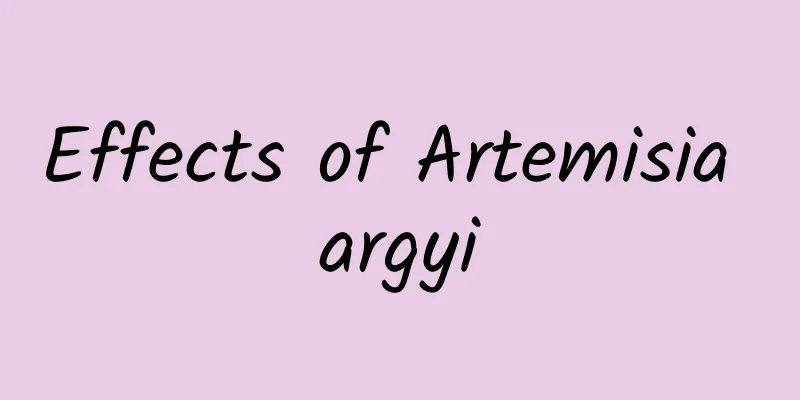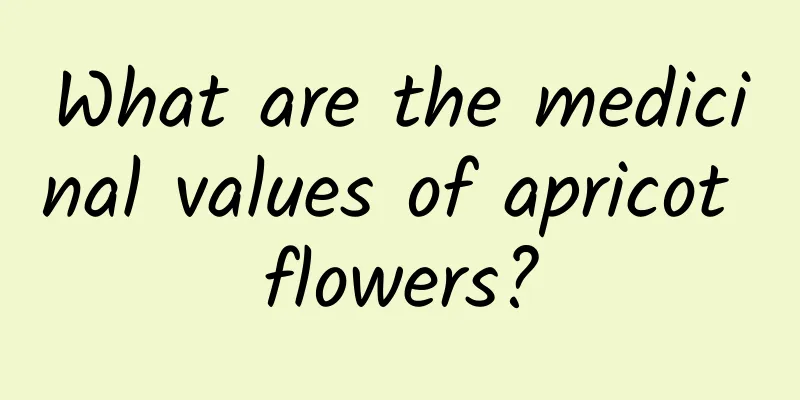The efficacy and function of Bai Liang Jin

|
The environment is now seriously deteriorating and various diseases are emerging one after another. In order to prevent the occurrence of various diseases and ensure good health, many people choose to enhance their immunity through diet. As a food ingredient that can fundamentally regulate various functions of the body, Chinese medicinal materials have received widespread attention. Today I will introduce to you the medicinal herb Bailiangjin. [Alias] Octopus dragon, eight-clawed golden dragon (Caomu Convenient Prescriptions), throat-opening sword, pearl hidden under the leaves, champion red (Tianbao Materia Medica), Sophora flavescens, iron umbrella, pearl umbrella (Fujian Chinese Herbal Medicine), wild monkey date, pearl umbrella (Jiangxi Herbal Handbook). [Source] It is the root and rhizome of the Myrsinaceae plant Bailiangjin . It can be harvested throughout the year, but is best harvested in autumn and winter. After harvesting, wash it and use it fresh or dry it in the sun. [Original form] Evergreen shrub, up to 1 meter tall. Stem usually simple or finely branched near tip. The leaves are alternate, lanceolate or broadly lanceolate, 9-20 cm long, 1.5-5 cm wide, with acuminate apex, nearly entire margin, or wavy serrations, broad cuneate base, dark green above, light green below, veins protruding downward, with dark brown glandular dots near the edge of the reticulate veins; petiole 8-15 mm long. The flowers emerge from the axils of leaves at the stem tip, numerous and arranged in umbels, with a pedicel about 6 cm long, slender, 1-2 cm long, densely covered with short glandular hairs; the calyx is 5-lobed, with lobes lanceolate to rectangular; the corolla is purplish red, bell-shaped, 5-lobed, with lobes ovate to ovate-lanceolate; there are 5 stamens inserted at the base of the corolla, with short filaments and arrow-shaped anthers; there is 1 pistil, the ovary is spherical, the style is thin, and the tip is pointed. The drupe is spherical, 5 to 7 mm in diameter, and red when ripe. 1 seed. Flowering period is from July to September. Fruiting period is November. [Habitat distribution] Growing in jungles on hillsides or next to rocks. Distributed in Sichuan, Guizhou, Hunan, Hubei, Jiangxi, Zhejiang, Fujian, Guangdong, Guangxi and other places. 【Chemical composition】 The root contains bioalkali, bergenin and argentic acid. 【Nature and flavor】 Bitter, pungent, cool. 【Functions and indications】 Clears away heat, eliminates phlegm and promotes diuresis. Treat sore throat, cough due to lung disease, difficulty in expectoration, jaundice due to damp heat, edema due to nephritis, dysentery, leucorrhea, rheumatic bone pain, toothache, and swollen and painful testicles. [Usage and Dosage] For oral use: decocted in water, 0.5-1 liang (1-2 liang for fresh product). For external use: decoct in water and gargle or grind into powder for application. [Additional prescription] ①Treatment of tonsillitis: 1. Take one liang of fresh whole root of Bailiang, decoct in water and drink; or decoct one liang of fresh golden root of Bailiang in water and add a little vinegar, gargle with it or swallow it frequently. ㈡ Dry the roots or leaves of the golden mulberry tree, place them on new tiles, roast them until dry, grind them into powder, and blow them into your throat several times a day. (Fujian Chinese Herbal Medicine) [Note] The roots and rhizomes of the same genus plant, Dwarf Cinnabarinaceae, are also used in the same way in a few areas. See the entry for "Dwarf cinnabar root". 【Excerpt】 《*Dictionary》 [Source] From "Compendium of Materia Medica": Bai Liang Jin, the leaves are similar to lychee, the back is green when they are first born, and after they bloom and bear fruit, the back is purple and the front is green. The seedlings are two or three feet tall, with trunks like trees that do not wither in winter. They bloom green in early autumn and bear fruits as big as beans, which are green when raw and red when ripe. The root is used as medicine and can be collected at any time. Use it to beat away the heart. Those found in rivers have red roots like turnips, thin green stems, and small yellow flowers in April that resemble star flowers. The roots are harvested in May, when they are one inch long, and dried for use. Bai Liang Jin is often used in the treatment of some diseases. It can be made into a compound prescription or used alone as needed. However, Bai Liang Jin should not be consumed blindly to avoid adverse effects on the body. |
<<: The efficacy and function of Bailiang Gold Leaf
>>: The efficacy and function of white grass
Recommend
There are various optical illusions. What is the point of studying them?
We need to study not only human illusions, but al...
The efficacy and function of jackfruit leaves
Jackfruit leaves are a kind of traditional Chines...
Among all fruit-based alcoholic beverages, why is wine the only one with the greatest influence?
Written by Wei Shuihua Header image |pixabay In t...
What is the function of pine pollen
Why do many people now like to eat pine pollen fo...
The efficacy and function of nosebleed thunder
The traditional Chinese medicine nosebleed thunde...
Can I take Chinese medicine during breastfeeding?
For mothers in the lactation period, you are not ...
How many steps are needed to keep a spacecraft “neither hot nor cold” in the universe?
When we imagine space You might think of the vast...
Academician Zhong Nanshan: During the epidemic, it is very important to protect your immunity!
Reviewer of this article: Chen Haixu, Deputy Dire...
The National Health Commission has issued a guideline for the diagnosis and treatment of monkeypox. Monkeypox virus can be inactivated by doing this
Xinhua News Agency, Beijing, June 15 (Reporters X...
It’s not that I can’t afford a down jacket, but are military coats really more cost-effective?
Winter is here, and the temperature drops sharply...
Eating like this will make you sick! 6 bad eating habits that will "eat away" your immunity...
The last week of April every year is World Immuni...
Taiyi Zhenren's lotus root, Squidward's wrist, the demon tribe's bathhouse, the "hidden boss" in the scientific circle
This Spring Festival, when you were excited about...
What are the effects of Codonopsis pilosula and Astragalus membranaceus
There are many different kinds of medicinal herbs...
Why are girls more likely to be hurt? It’s not because they are being coquettish or pretentious, they are really more afraid of pain!
One minute with the doctor, the postures are cons...









